Entry, descent and landing (EDL) hardware
Landing system
Upon leaving the Earth, InSight resembles a Russian doll. It comprises first of all a landing capsule attached to a cruise stage (a cylinder flanked by solar arrays), designed to get the lander to its destination. Once near Mars, the landing capsule will separate from the cruise stage, which will then be of no further use.
The landing capsule itself comprises several elements: the forward part is occupied by a broad heat shield, while the rear part is fitted with a shield enclosing a parachute. The InSight lander, with its legs and solar arrays folded, is sandwiched between the forward heat shield and the rear shield.
During its descent to the Martian surface, the InSight lander will be protected by a huge 62 kg heat shield 2.65 m in diameter, covered in ablative tiles.
Approaching the planet at a speed of 6.3 km/s, InSight will hit the upper part of the Martian atmosphere with great violence. At an altitude of 125 km, the layer of air surrounding Mars is very thin, but despite that, frictional forces will be considerable, causing the surface of the spacecraft to heat very rapidly to several thousand degrees.
By slowly burning off, the heat shield's ablative tiles will absorb a large part of the thermal energy released on entering the atmosphere, thus protecting the lander.
Despite the massive braking effect due to the friction of the heat shield in the upper layers of the Martian atmosphere, InSight's speed is too high for it to land softly on the Martian soil.
At an altitude of roughly 9 km, the lander will deploy a parachute, a wide fabric corolla 12 m in diameter. InSight's parachute uses what is known as a disk-gap-band structure.
It is opened by a pyrotechnic mortar, since a parachute extractor cannot be used on account of the Martian atmosphere’s low density and the high speed of the probe.
The InSight lander’s final braking is down to three clusters of four retrorockets attached to the probe platform. Consuming hydrazine stored in a pressurized tank, each thruster develops approximately 300 Newtons.
The retrorockets on InSight are pulsed, unlike, for example, the variable-thrust engines used on the Viking probes in 1976 and the Curiosity rover in 2012. The thrust for InSight is controlled by the onboard computer, which commands the incessant ignition and shut-down of the thrusters.
The latter are only cut off completely when the probe legs are in contact with the ground. However, the exhaust from the motors is such that the landing site will be only slightly disturbed by the lander's arrival, and the quantity of dust stirred up by the gas jets will be minimal.
Attached to the bottom of the InSight platform is a descent radar designed to measure the changes in speed and altitude during its descent towards the Martian surface.
InSight's descent radar (© NASA/JPL-Caltech/Lockheed Martin)
With four radio antennas (one pair for altitude and three pairs for horizontal speed), the radar will initialize at a height of roughly 6 km.
The data provided by the radar will be essential for the onboard computer, since it has the heavy responsibility of controlling the incredible choreography that will allow the InSight lander to descend safe and sound onto the rust-coloured surface of the Red Planet.
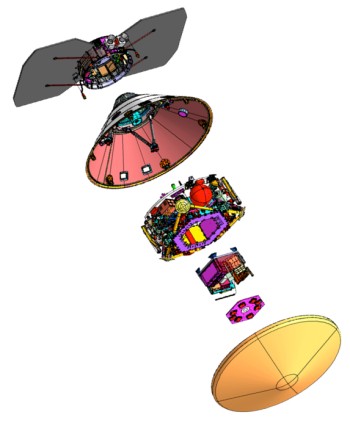 Nested structure of the InSight probe (© NASA).
Nested structure of the InSight probe (© NASA).
A nested structure like a Russian doll
Last updated: 28 October 2016
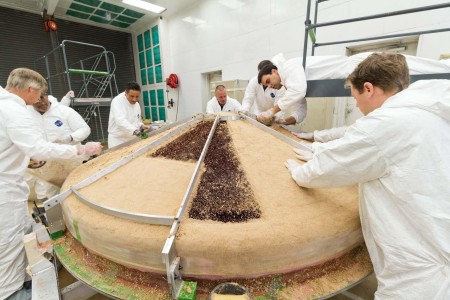 Manufacture of the InSight heat shield (© NASA).
Manufacture of the InSight heat shield (© NASA).
Tackling the hellish conditions of atmospheric entry
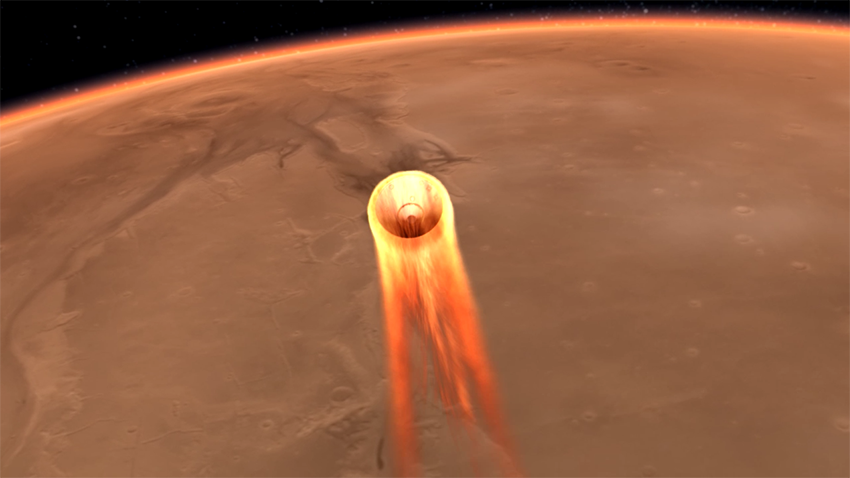 The heatshield protects the InSight probe from the heating caused by the friction with the atmosphere during the entry phase (© NASA).
The heatshield protects the InSight probe from the heating caused by the friction with the atmosphere during the entry phase (© NASA).
Last updated: 28 October 2016
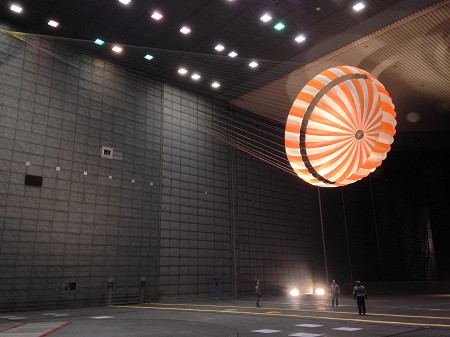 Wind tunnel test of InSight's 12-metre-diameter parachute. The tunnel is 24 m high by 37 m long (© NASA).
Wind tunnel test of InSight's 12-metre-diameter parachute. The tunnel is 24 m high by 37 m long (© NASA).
A large-diameter parachute
Last updated: 28 October 2016
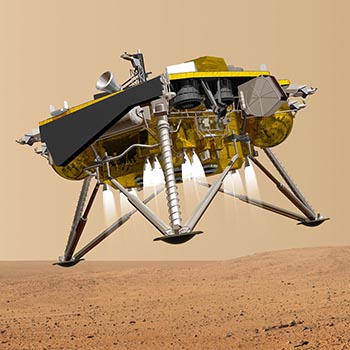 Final descent phase under power of the InSight probe (© David Ducros).
Final descent phase under power of the InSight probe (© David Ducros).
Retrorockets for final braking
Last updated: 28 October 2016
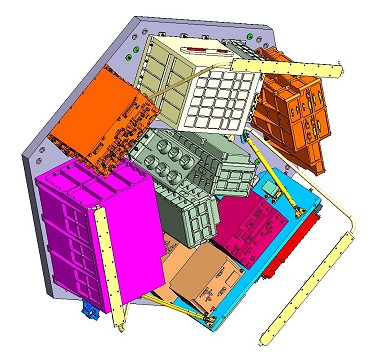 Descent radar altimeter of the InSight probe (© NASA/JPL-Caltech/Lockheed Martin).
Descent radar altimeter of the InSight probe (© NASA/JPL-Caltech/Lockheed Martin).
Descent radar altimeter
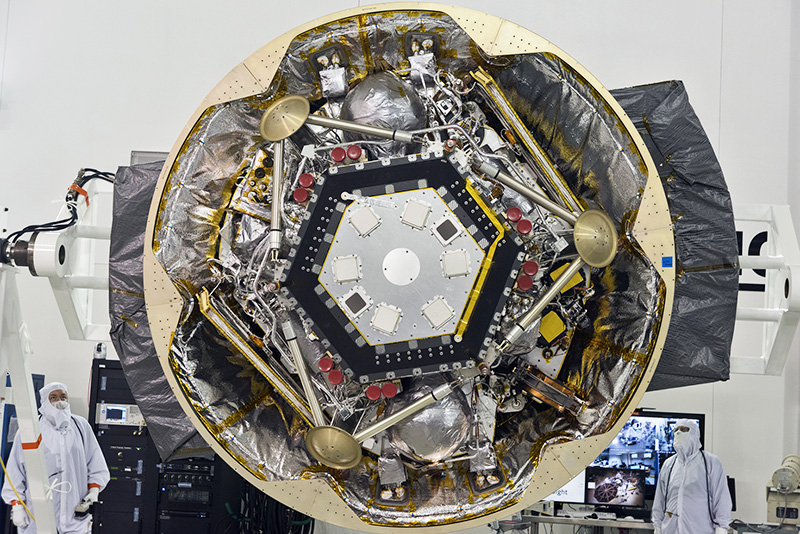 The InSight lander integrated in the cruise stage and viewed from below, showing the antennas of the descent radar (© NASA / JPL-Caltech).
The InSight lander integrated in the cruise stage and viewed from below, showing the antennas of the descent radar (© NASA / JPL-Caltech).
Last updated: 4 april 2018





